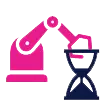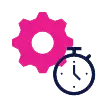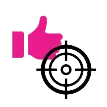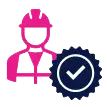0 806 11 00 87
Monday-Friday / 9 a.m.-6 p.m.
Monday-Friday / 9 a.m.-6 p.m.
The next generation offline robot programming software based on powerful technology from Delfoi Robotics.
Maximize the potential of your robots with a fast, precise and error-free programming solution.
Acronym: OLP (Offline Programming) – PHL (Offline Programming)




Program your robots for various industrial processes such as welding, processing or spraying using a single software.
Visual Components OLP covers processes such as arc welding, Tig welding, laser welding, spot welding and riveting.
Covers processes such as grinding, polishing, buffing, sanding, deburring, deburring, plasma cutting and laser cutting.
Covers processes such as wet painting, spray coating, thermal spraying and cold spraying.
This allows you to spot hidden problems and minimize investment risks.
17 brands of post-processors in one product… And more will be added in the future!
Over 40 versions of robot controllers, including older robots and newer models.
Program your robots regardless of their brand or type. Eliminate the need to use multiple software for different brands. Visual Components OLP supports 17 of the most common robot brands.

Quickly generate programs in virtual robot cells, anywhere in the world.
Let the software validate and optimize programs before sending them to production to avoid costly errors.
Program your robots in a few clicks
Save your programs to reuse them at any time for other projects.
During a 30-minute video, our VISUAL COMPONENTS expert integrator will take stock of your line design practices and estimate the time you could save thanks to Visual Components

Offline robot programming (PHL or OLP in English) is a method of generating robot programs in computer software (virtual environment) based on 3D CAD data.
Once the robot program is generated and verified in the software, it can be downloaded to the physical robot.
Let's imagine that a robot is programmed to weld a circular part onto a metal part.
The robot must move the welding torch in a 3D arc around the circumference of the part, while maintaining precise orientation relative to the surface. You can do this by teaching points using a pendant, but you will need a large number of points and it will take a long time. The gap between the torches will most likely vary, as will the orientation of the torch. Additionally, the robot cell will not be available for production until you complete the programming. This shutdown can last days or even weeks. With PHL it is much easier to produce the robot program. Import a CAD file of the weld cell into the OLP software and show the path you want the torch to take. Once completed, the software generates the robot program and checks for potential collisions. Once verified, the program is downloaded into the robot controller, run once at low speed for a double check, and the cell is ready to resume work.
Every robotic application is a candidate for PHL;
the only condition is to have digital models of the work cell, parts, tooling and fixings. (Today, everything is designed in CAD, which shouldn't be a problem.) However, the benefits are greater as robot paths become more complex and more points need to be taught. With these points in mind, here are some of the best use cases for PHL:
Welding – access and orientation are particular challenges that PHL addresses, and complex weld beads can require a large number of points.
Coating (painting) – as with welding, orientation is important, as is paint thickness and standoff distance, ensuring that all areas can be reached and painted optimally.
Removal – many assembly operations require the removal of long, complex adhesive beads: PHL allows toolpaths to be created quickly offline with consistent quality.
(Surface) processing – applications such as blasting and deburring often require long, complex paths that require a large number of points.
Assembly applications (without jig) – gripping and insertion movements require precise control of the orientation of the gripper, which is possible at a higher level with PHL.
Material Handling Applications – PHL allows the programmer to determine the quickest distance between two locations, which is not always the most obvious path.
Cutting – Plasma, laser, or waterjet cutting can work for standard parts, but for complex geometries, robots are needed with precise cutting patterns that can be generated with PHL
Manufacturers using OLP software report numerous benefits:
No robot downtime
Programming time can be reduced by up to 80% and robot utilization increased by up to 95%, boosting programmer productivity and reduces cell downtime.
Fast setup times
Less time is needed to launch a new product into production – programming is done simultaneously rather than sequentially.
Increased safety
Reduced risk of accidents and injuries
Higher, repeatable quality
Robot programs are better optimized (shorter cycle times, increased precision and consistency), resulting in higher, repeatable production quality.
Agnostic to robot brand and process
Regardless of robot brand or process type, advanced OLP software can cover all applications.
No more surprises
Last minute changes to fasteners and tools are avoided.
Although any manufacturer using robots can benefit from PHL, the greatest gains are seen when batch sizes are small and production cycles are short.
The problem is that when programming to the robot, frequent changes and adjustments reduce uptime and operating hours.
However, with Visual Components OLP, programs are tested virtually and uploaded to the robots while the physical aspects of the cell (fasteners, clamps, etc.) are modified.
Prudence suggests putting the robot through a low-speed cycle to check for collisions, after which the cell is ready to restart production. Additionally, any design-related issues in the documentation or models are identified in advance and can be communicated to other teams and resolved without loss of production time.
The alternative to using OLP is to program directly on the robot.
This solution poses at least three problems: 1. Risk of project delay and additional costs
2. Security concerns
3. Loss of production capacity
The risk of project delays is significant when programming is carried out on the robot.
At this point all tools and fixtures have been designed, built and installed. Conveyors or other handling devices are in place and parts are ready for use. Only now can the programmer start teaching the robot points. Problems are almost certain to arise. The robot may not be able to reach a particular location, the parts may be in the wrong location, or the targeted cycle time may not be achievable.
In all these cases, the only solution is to redefine the problem points of the cell.
Inevitably, this delays the start of production, sometimes by several weeks, and results in significant additional costs. Learning points using a pendant often requires the programmer to enter the cell: this is sometimes the only way to see where the tool is going or to check for collisions.
Putting the robot into “learning” mode should ensure its safety, but there is always a risk of unexpected movement, either from the robot itself or from one of the other mechanisms in the cell. Finally, while the programmer is learning points inside the work cell, the robot cannot do anything else. This is unproductive time until the programmer is finished and the program is proven. And even the best programmers tend to underestimate the time required for the task!